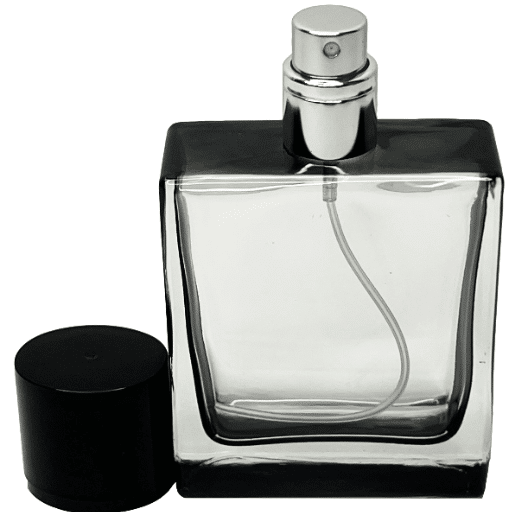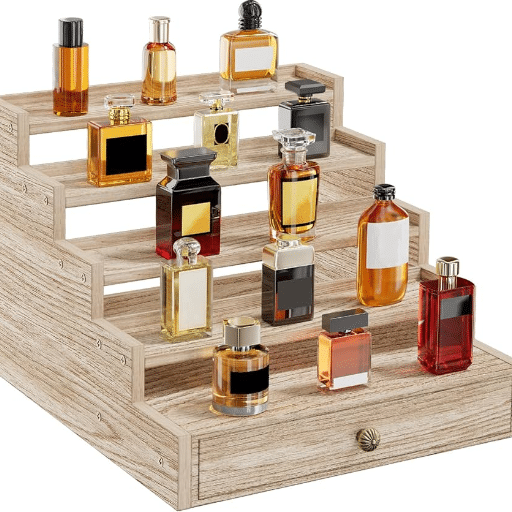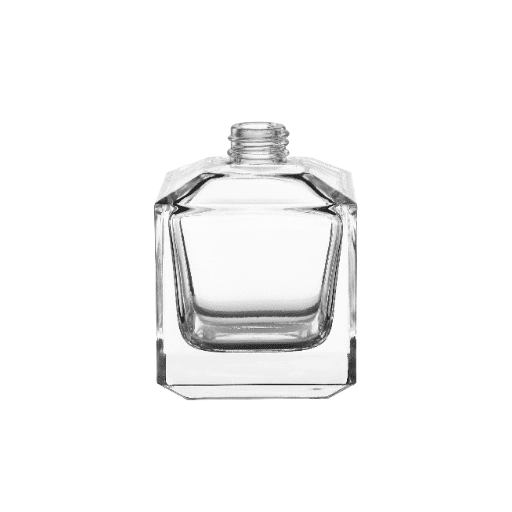Fragrances are more than a finishing touch in personal grooming; they are an extension of one’s self and encapsulate one’s mood. Unfortunately, the world of men’s fragrances is often confusing. Terms such as aftershave, cologne, and eau de toilette are frequently used interchangeably. These fragrance types may serve different purposes. In this article, we will discuss the core differences between them. Understanding their purpose, application, and potency is crucial. This information will empower you with the confidence needed whether you wish to enhance your grooming practices or have the perfect gift in mind.
What’s the Difference Between Aftershave, Cologne, and Eau de Toilette?
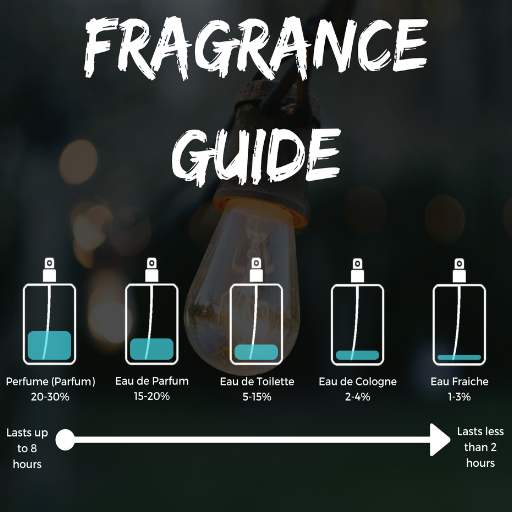
The differences between aftershave, cologne, and eau de toilette are their uses, the strength of their scents, and their length of last.
- Aftershave is mainly meant to calm the skin and protect it post-shaving. It smells pretty light. The antiseptic properties are just meant to soothe irritation or infection. Their scent is also light and dissipates fast.
- Cologne focuses more on scent. It is used in more significant quantities than aftershave but less than eau de toilette. It is often worn in everyday attire and gives off a pleasant, not too strong, aroma.
- Among the three, Eau de Toilette has the most pungent scent. It is crafted to ensure a long-lasting scent and is usually used during special events or when strong perfume is needed.
Knowing these differences ensures that your needs are met, such as skin care, daily fragrances, or strong scents that leave an impression.
Understanding Fragrance Concentration Levels
The varying fragrance concentration levels significantly influence the longevity and intensity of a scent. Below is a breakdown of the standard categories:
- Parfum (Extrait de Parfum)
With 20-30 percent perfume oils, Parfum has the most significant fragrance concentration compared to other scents. This and other factors enable it to last between 8 to 12 hours on the skin. A robust product ideal to be used on formal occasions is Parfum. It is always recommended to use a minimal amount because it is expensive and intense.
- Eau de Parfum (EDP)
Eau de Parfum remains one of the best flankers owing to its composition and fame intertwined within the middle-described notes. Also, one of the most popular options, Eau de Parfum, contains EDP between 15–20 percent. It remains noticeable for 4 to 8 hours with a good balance of price flanker towards the context used. Most people utilize EDPs daily, hoping to have no scent fatigue throughout the day. Cleansing with EDTs or other watery counterparts becomes a soothing activity.
- Eau de Toilette (EDT)
Light fragrances are characterized by a 5-15 percent concentration of perfume oils, and formal occasions are no-gi, with 2—to 4-hour moderate longevity. Subtle fragrance lovers prefer EDT for casual or daytime wear. Staying under the radar is vital to everyday tasks, and unwinding is most effectively done surrounded by soothing scents in perfumes, giving the perfect timing to relax without thinking about the things to come.
- Eau de Cologne (EDC)
Eau de Cologne has a refreshing and uplifting smell. Its light composition lasts 2 hours, making it ideal for light reapplication during the day. It contains 2 – 5% perfume oils.
- Eau Fraîche
This is much more like a refreshing mist rather than a classic fragrance. It’s less dense than the others, with an oil concentration of less than 3%. This makes Eau Fraiche last less than an hour, which is excellent for a very short and light spray.
Making the Right Choice
When selecting a fragrance, consider how long you would prefer it to last, what occasion you will use it, and your taste. For extended wear, choose fragrances with high concentration, such as Parfum. Casual outings or warmer climates are ideal for lighter scents like Eau de Toilette or Eau de Cologne. Always test scents on the skin, as factors such as body chemistry and environment greatly influence the longevity of the smell.
How Scent Duration Varies Among These Products
The enduring nature of a fragrance is closely tied to how concentrated the aromatic parts are, which will dictate how long the scent stays on the skin. Parfum, or Extrait de Parfum, contains 20% to 30% of fragrance oils, the highest concentration. The latter allows Parfum to last anywhere from 8 to 12 hours. This duration makes it suitable for long events or wearing it throughout the day.
Eau de Parfum (EDP) is the next most concentrated category, with 15% to 20% of fragrance oil content. EDP fragrances are often enduring, lasting between 6 and 8 hours, providing a strong presence to the user, but not as powerful as Parfum.
Eau de Toilette (EDT) includes 5% to 15% fragrance oils and is lighter in composition and longevity. It lasts around 3 to 5 hours and can be regarded as a better choice than others during the daytime and casual settings.
For lighter scents, there is Eau de Cologne, which contains around 2% to 5% aromatic compounds. This concentration yields a less potent scent that lasts approximately 2 hours and is thus ideal for quick refreshing sprays in warm weather.
Finally, Body Mists and Eau Fraîche sit at the lowest fragrance oil concentration, often under 3%. With this category, body mists provide the shortest scent duration, peaking at around 1 to 2 hours, and are ideal for someone looking for a scent that simply provides fleeting freshness, especially after showering.
These guides ensure that people do not struggle with choosing a specific scent, that it enhances their lifestyle, and that it fulfills their expectations.
Price Points: Why They Cost What They Cost
The price of fragrances is completely uneven due to several key reasons, such as the quality of ingredients, the level of concentration, the reputation of the brand, and even the processes used to manufacture them. Expensive perfumes often use ouds, ambergris, or sandalwood as their base, which require sourcing and processing. An example would be natural oud oil, which comes at an extortionate price, costing thousands of dollars a pound.
The price is equally affected by the concentration of fragrance oils. Perfume and Eau de Parfum contain more; therefore, they last longer and are more expensive than Eau de Toilette or Body Mists. Creating unique, well-balanced compositions requires intricate skill and increases the price, especially for luxury and niche brands.
How a product is packaged and its marketing strategy determines its price difference. Premium fragrances, for example, come in beautifully customized extravagant bottles and receive lavish marketing treatment, which adds to the fragrance’s value. Some luxury brands are inclined to spend enormous amounts on celebrity endorsements or putting products in designer shops.
Research has found that designer perfumes are priced between 100 and 300, while niche fragrances can cost more than 500 due to their exclusivity and high level of craftsmanship. Affordable alternatives like Eau de Cologne and Eau de Fraîche are easily accessible to lower-income individuals as their price range is around 20 to 50.
These factors help explain the price differences and encourage consumers to consider the quality and value of their investment, which can help them rethink their choices.
What Is Aftershave and When Should You Use It?

Aftershave is a part of a man’s grooming arsenal. After shaving, it is applied to the skin to calm irritation, protect nicks and cuts, and prevent infection. Most aftershaves nowadays have a lotion-like feel, as they are designed to moisturize the skin and also contain antiseptic ingredients to cleanse minor wounds. Aftershave care is crucial to protecting skin health, especially for those suffering from skin sensitivities.
The Dual Purpose: Fragrance and Skin Care After Shaving
A modern aftershave combines skin-nourishing aloes, witch hazel, and hyaluronic acid with a calming fragrance for an elegant touch. After shaving, look for products that fire up skin goodness and pamper skin thoughtfully skin for inflammation and dryness caused by shaving and micro-injury. Aftershave is a powerful addition to skin health when integrated with pore-nourishing ingredients.
In terms of scent, aftershave functions as a light yet refreshing cologne. It also offers a light and refreshing fragrance that appeals to one’s taste. Many aftershaves in the market today contain a concentration of essential oils for fragrance purposes between 1 to three percent (as per studies conducted), which ensures that the scent is there for a reasonable time but not too overpowering. Furthermore, there seems to be a shift towards alcohol-free or low-alcohol options as these are kinder to the skin and less irritating for sensitive users.
This compelling reason is why aftershave remains a popular item in men’s grooming after-shave care products, as it fulfills the need for a sumptuous scent while meeting skin care needs.
Aftershave Ingredients That Soothe Razor Burn and Irritation
Soothing and restorative ingredients are significant components in aftershave products, as they effectively calm razor burn and lessen the irritation caused. Aloe vera is well known for possessing anti-inflammatory properties in addition to hydration, which makes it suitable for redness and skin healing after a shave. Witch hazel is another popular addition because it helps to reduce inflammation and acts as an astringent that helps tighten pores while minimizing irritation.
The use of chamomile extract in aftershaves serves the purpose of reducing the sensitivity and redness experienced after skin shaving. It works to calm the skin down. Glycerin is another ingredient that acts as a moisturizer and keeps the skin hydrated while protecting it from drying out. Tea tree oil’s antibacterial and anti-inflammatory properties enable it to prevent infections and calm razor burn.
Research suggests that these aftershaves relieve skin discomfort after shaving and increase skin health over time. The combination of the calming components and the scientific assurance makes these formulations effective enough to meet the many demands of consumers with both instant and enduring skin health needs.
Should Aftershave Be Used Daily?
The daily use of aftershave depends on the individual’s skin, how often they shave, and where the user buys their aftershave. Those who suffer from sensitive or dry skin may find the daily use of aftershave troubling. The alcohol-based type of aftershave may cause dryness or skin irritation. Studies suggest using alcohol-free aftershave options instead. Alcohol-free alternatives with hydrating ingredients like glycerin or aloe vera tend to have a better effect with regular use because they avoid excessive drying and irritate the skin.
Dermatologists advise frequent shavers to use aftershaves with antibacterial components because they may help prevent ingrown hairs, razor burns, and other infections. Reports suggest that daily application of moisturizing or balm-based aftershaves benefits the skin barrier function, making the skin smoother and more resilient over time. In contrast, non-frequent shavers or those with sensitive skin may want to use aftershave every other day to avoid unnecessary buildup and irritation, so less frequent application may be gentler with more optimized results. Long-lasting skin health is achieved by choosing specific formulations designed for individual skin needs.
What Makes Cologne Different from Other Fragrance Types?
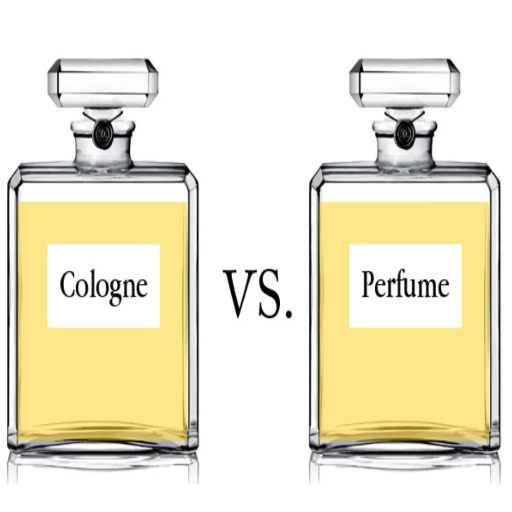
The concentration of aromatic oils sets cologne apart from other types of fragrance. It usually contains a lower percentage of these oils, 2-4%, which makes cologne lighter and less intense than perfumes or eau de parfums. This more subtle scent only lasts for a few hours. Because of this lower concentration, its fragrance is refreshing and favored for casual occasions.
The History and Evolution of Eau de Cologne
The Origins of Eau de Cologne
Eau de Cologne originated in the early 1700s in the city of Cologne in Germany. In 1709, an Italian Expat, Johann Maria Farina, created it. He wished to craft a fragrant blend inspired by landscapes from his homeland. He combined citrus oils like bergamot, lemon, and orange with herbal ingredients like lavender and rosemary. He named his creation Eau de Cologne to pay tribute to his adopted city. It didn’t take long before it gained popularity among European aristocracy.
Expansion and Renown
The centuries after the 19th saw Eau de Cologne become a hallmark of luxury, readily available to most members of society. New advances in perfumery enabled the creation of even more diverse cologne formulas, facilitating its spread throughout Europe. Established in Cologne in 1792, 4711 was the first iconic brand to cement the city’s association with fragrances.
Current Cologne Industry
Today, the fragrance industry reports global cologne sales exceeding tens of billions annually, making it a foundational pillar. Unlike in the past, modern colognes have forgotten their citrus-herbal roots and instead come in infinite variations to satisfy contemporary demands. Major fragrance houses have also entered the versatile cologne market, producing scents containing woods, florals, and spices appropriate for different times of the day and unisex. Consumer demand for effortless, lightweight, sprayable scents continues to fuel market growth.
Sustained Innovations
Sustainability in the industry is a recent development. Most new cologne brands adopt transparent sourcing, biodegradable packaging, and naturally derived ingredients to address environmental and ethical issues. Such changes accompany the growing concerns of modern consumers. Because of this, Eau de Cologne will continue to be relevant for years to come.
Typical Cologne Concentration and Scent Longevity
Compared to other fragrance categories, such as Eau de Toilette or Parfum, eau de Cologne contains a lower concentration of aromatic compounds, usually between 2% and 5%. Due to the lower concentration, Cologne is suitable for everyday or casual attire as it has a lighter, airy scent. On the downside, Cologne’s scent longevity is relatively short, lasting approximately two to four hours, depending on various factors.
For lasting impact, apply cologne to the wrists, neck, and behind the ears, as these areas are heat generators. Moreover, cologne works best when layered on moisturized skin or combined with other products such as scented body lotion or after-shave. New developments in fragrance formulations have improved the staying power of colognes, allowing for more extended wear while still light and refreshing.
Best Ways to Apply Cologne on Pulse Points
To pulse points is one of the best-recommended methods for maximizing scent and longevity. These are areas within your body with relatively higher temperatures where blood vessels are close to the skin, such as the wrists, neck, elbows, knee area, and behind the ears. Strikingly, these are also places with skin and fragrance interactions that create heat.
For optimal results, lightly scrub the cologne with a clean, moistened skin area. Applying an unscented moisturizer beforehand can help trap the scent. Importantly, do not rub the cologne into the skin because fragrance molecules are fragile and prone to changing structure, which would alter the cologne’s intensity.
Studies have shown that lasting aroma can generally be achieved with one to two sprays per pulse point. Under or overapplication may disturb the delicate balance between lasting scent and too much or too little. Layering cologne with products from the same scent line, like deodorants or body washes, can enhance and harmonize the fragrance profile for long-lasting wear.
Proper storage also plays a vital role in its quality and effects. Keeping cologne in a cool, dark place safeguards its chemical integrity, prolonging its shelf life and preserving its original scent. Using these methods will enhance the appeal of your cologne and amplify your impact wherever you go.
How Does Eau de Toilette Compare to Other Fragrances?
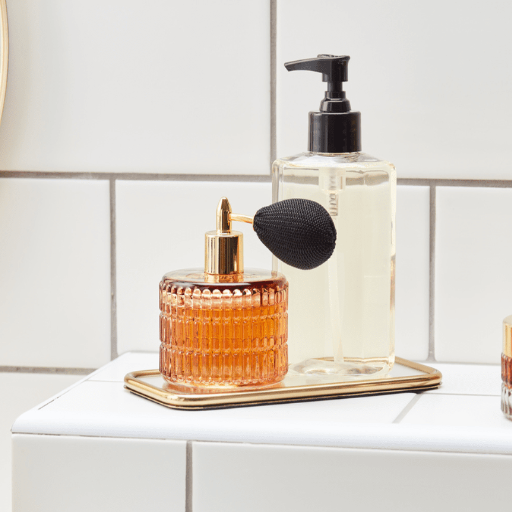
Eau de Toilette, or EDT, sits at a middle ground between Eau de Parfum (EDP) and Eau de Cologne. The fragrance oil content for EDT typically lies between 5-15%, meaning the scent lasts for around 4-6 hours. Unlike EDP, which is known for its intensity and long-lasting scent, EDT is more subtle and awakens the senses without overwhelming them. While Eau de Cologne is less intense than EDP, its fragrance lasts only 2-3 hours, making it a good fit for those looking for a quick refresh.
Eau de Toilette vs Eau de Parfum: Concentration Differences
In my experience with EDT and EDP, the difference lies in the concentration of fragrance oils. EDP is richer and contains 15-20% fragrance oil, allowing it to last between 6-8 hours, so EDP works best for special occasions. EDT has a lighter concentration, providing a fresher scent lasting 4-6 hours. EDT is ideal for daily use or warmer days.
The Ideal Occasions for Wearing EDT
Eau de Toilette (EDT) is perfect for any setting that requires a subtle and refreshing scent. It’s often used in the daytime because of its low fragrance oil concentration and lightness when worn in warmer regions or around summer. For example, EDT works well for outdoor events, informal office days, or relaxing weekend activities when a strong scent would be too much. Research indicates that lighter fragrances are more popular in daytime and warmer weather because they evoke freshness without overwhelming the wearer. Moreover, this fragrance is perfect for busy individuals as it provides just the right amount of charm and understated elegance to make a good impression in casual and relaxed settings. EDT enhances everyday moments and is suitable for all occasions.
Popular Men’s EDT Fragrances and Their Aromatic Profiles
- Dior Sauvage Eau de Toilette
Dior Sauvage is known for its bold and fresh aromatic profile. This celebrated Dior EDT features crisp citrus opening notes of bergamot and pepper that transform into Sichuan pepper, lavender, and geranium heart notes. Cedarwood and ambroxan create the warm, slightly woody dry-down. Sauvage is perfect for casual evenings where you want to make a lasting impression.
- Acqua di Gio by Giorgio Armani
Acqua di Gio is a streamlined classic recognized for its aquatic and citrus scent notes. Lime, mandarin orange, and neroli are top notes, creating a zesty start to the fragrance, while the heart reveals jasmine and marine notes. The scent is grounded with earthy and clean white musk, patchouli, and cedar, which make up the base notes. Suitable for warm weather, this EDT will be a perfect companion for day outings during the summer.
- Bleu de Chanel Eau de Toilette
Its woody, aromatic nature makes it appropriate for various settings. Starting with the vibrant introduction of grapefruit and mint, its middle notes of ginger and nutmeg bring a spicy and invigorating heart. The base’s sandalwood, cedarwood, and labdanum add to a refined, smoky finish. Bleu de Chanel is best worn from day to night.
- Versace Dylan Blue Eau de Toilette
Dylan Blue is well known for its masculine fougère profile, opening with bergamot, grapefruit, and fig leaves. The heart becomes spicy with black pepper and violet middle notes, while the base is rounded out with tonka bean, musk, and patchouli. Ideal for casual and professional settings, Dylan Blue is bold, making it perfect for confident wear.
- Paco Rabanne Invictus Eau de Toilette
Invictus has a bold and sporty personality with marine and woody elements. The fragrance begins with lively grapefruit and marine notes, then a heart of bay leaf and jasmine. Warm, sensual edges come from base notes of guaiac wood, ambergris, and patchouli. An active lifestyle or daytime wear pairs well with this refreshing composition.
The EDT fragrance options are some of the most popular, offering an extensive range of aromas so that everyone can find something that matches their preferences and occasion. Every man’s grooming kit now has a reliable scent option, ranging from fresh and aquatic to bold and woody.
How Should You Choose Between Aftershave, Cologne, and Eau de Toilette?
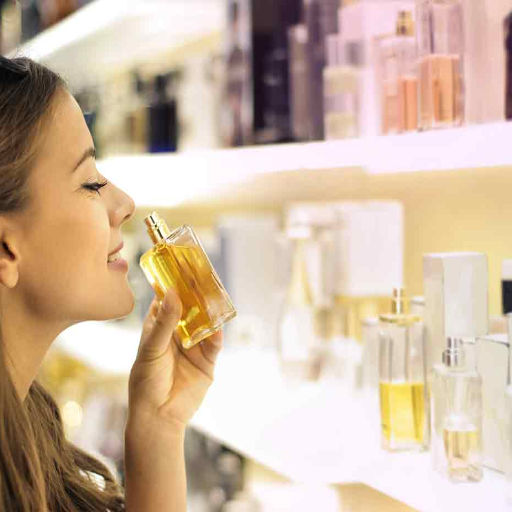
When the quote ‘delegate sensibly’ comes into play, an individual must select between aftershave, cologne, and eau de toilette. Each one serves a different purpose and is fitting for distinct occasions.
- The aftershave product is put on after a shave as an irritant and skin soother helper because it calms down the skin, stops further irritation, and has a mild fragrance. The former is generally true. However, aftershaves do not perform well in more skin-abrasive situations, such as cuts or wounds. Because it contains less perfume oil, it is ideal for everyday grooming.
- Cologne has an even higher concentration of perfume oils than aftershave, making marks significantly sharper and enabling them to last longer. Cologne is casual and/or social. Its use is recommended when a lesser or moderate mark is favored.
- Eau de Toilette is higher in scent and lasts longer than even cologne, further along being the strongest. EDT is perfect on warm days when even bathing before an outing is a good idea but not necessitated. The hour when the sun is not scorching is the best time for such an occasion.
It takes some thought to create the correct formulation, but it is usually simple, with scent strength, durability, and purpose.
Matching the Fragrance to Your Specific Needs
When choosing a fragrance, it is essential to consider your activities, personal taste, and the occasion to ensure it matches your requirements. For example, fresh and citrus fragrances are suited for active people because their light and refreshing scents bolster workouts and casual daytime outings. Research shows citrus elements, such as lemon, bergamot, and grapefruit, uplift energy and positivity, making them potent for favorable everyday experiences.
Oriental and woody fragrances are usually preferred for evening wear or formal occasions because of their rich, warm, and long-lasting nature. They radiate warmth thanks to gold, sandalwood, and vanilla, which add depth and sophistication and give sweetness and tender intimacy. Such fragrances are strongly associated with inner confidence and sensuality and are ideal for wearing on remarkable and romantic occasions.
Much like that, floral fragrances have appealing notes for those who want to add an ageless touch of classic feminine fragrance. Such loss is popular because roses, jasmine, and lily are flexible, and many women use them for everyday and formal occasions. Studies show floral fragrances remain on top of the favorites universally, proving their appeal across many demographics.
As part of a balanced approach, also consider the season period. In the two warmer months, fragrances leaning towards aquatic or green tend to evoke freshness and vibrancy. In contrast, spicy or musky scents that exude rich warmth are ideal for colder months. They deepen the coziness of the atmosphere.
With these pointers and personal preferences, making an informed decision tailored towards personal branding and multi-functional use is possible.
Considering Skin Type and Sensitivity
Moreover, when selecting a fragrance, understanding one’s skin characteristics and sensitivities is crucial as they dictate how a perfume reacts to skin. Those with dry skin, for example, would find that fragrances do not last long as the skin’s lacking oils tend to evaporate scents. In this case, applying an unscented lotion pre-apply perfume would help extend the duration. Conversely, people with oily skin have the opposite experience, drier skin tends to have stronger scents for oily skin tends to bind scent.
If you have delicate skin, avoiding products with high concentrations of alcohol and synthetic additives is essential due to the risks of allergies and irritations. Target natural cosmetics. It’s advisable to perform a patch test before completing the application. Essential oils containing aromas like lavender or chamomile are known to be softer and less abrasive. Moreover, persons sensitive to alcohol in perfumes may wish to consider Eau De Parfum offerings, which generally have a softer alcohol bite.
Skin and fragrance interactions specifically influence your choices towards becoming more effective for scent appreciation and skin wellness.
The Case for Owning Multiple Fragrance Types
Owning different fragrances allows you to customize according to the occasion, cutting across seasons, moods, or other instances. As noted in studies, some scent families, such as aquatic or citrus fragrance notes, are more appropriate in warm seasons because of their light and refreshing nature. Out in the cold, spicy and woody fragrances are preferred to deep and warm scents. Such flexibility ensures your scent works well with the surroundings, providing comfort and built-up confidence.
Moreover, changing between scents can showcase different parts of your character, as having more than one fragrance is an option. For example, a floral fragrance could demonstrate elegance and romance, whereas a bold and oriental scent could show mystery and sensuality. A recent survey shows that 65 percent of people prefer to switch scents depending on their mood or social situation, further proving the versatility of self-expression through scent.
Having an array of fragrances at one’s disposal also means less chance of olfactory fatigue setting in, where the nose grows accustomed to a scent through overuse or, in simpler terms, a lack of variety. Sticking to a single option may backfire and result in impaired impact due to loss of interest. Finally, regarding evolving preferences of fragrances, scent collections make it simpler to ensure constant access to new fragrances, allowing a person to stay in touch with seasonal vibes and shifts in personal preferences and growth.
What Are the Best Application Techniques for Each Product?
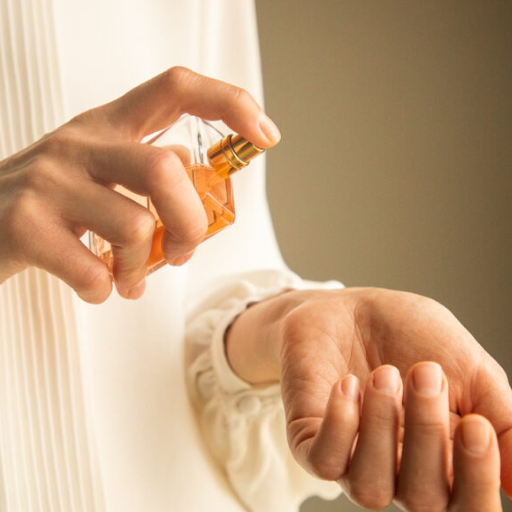
- Perfume and Eau de Parfum: For the best fragrance effect, apply to pulse points like the wrists, neck, and behind the ears. Do not rub the fragrance into the skin, which might change the scent.
- Eau de Toilette: Should be lightly spritzed over skin or clothing. Its lighter concentration makes it suitable for light applications. Eau de Toilette can be reapplied throughout the day for a refreshing boost.
- Body Spray and Mist: For best results, spray 6-8 inches from the body. This will ensure that the user is covered evenly. It is best for those looking for a subtle refresh.
- Solid Perfume: Using clean fingers, apply a small amount to the pulse points. Solid perfume is best for precise application and for travel.
- Roll-On Fragrance: It can be rolled directly onto pulse points like the wrists or collarbone. This method allows the user to control the amount of fragrance they want to use.
With these steps, you can make the most of every product and improve your fragrance experience.
Proper Aftershave Application Post-Shave
Using aftershave properly helps soothe the skin, prevent irritation, and keep skin healthy after shaving. Here are some guidelines that can help you apply aftershave correctly:
- Clean Your Face:
After shaving, soak your face with cold water to help eliminate any remaining shaving cream and lotion. Use a soft towel to pat your skin dry gently.
- Choose the Right Product:
Aftershave should be chosen according to the skin; for sensitive skin, always choose an alcohol-free aftershave that contains balm, as these do not sting or irritate. They splash alcohol for oily skin but are terrible for dry or sensitive skin.
- Use a Moderate Amount:
If using liquid aftershave, the size of a dime should be poured, but for balms, it should be short and the size of a pea. Also, remember not to use more than that as it irritates the skin and the nose with too much scent.
- Apply to Shaved Areas Only:
Apply the aftershave to your palms to the skin by pressing it to the newly shaved areas, such as the jawline, cheeks, and neck. These areas should be dabbed lightly to avoid skin irritation without applying too much pressure.
- Allow Time to Absorb:
Allowing the product to penetrate the skin while avoiding the application of moisturizing cream or moisturizing cologne does not achieve the shave’s solution.
- Follow Up with Moisturizer (optional):
If your skin feels dry or tight after shaving, using a moisturizer will trap some hydration and protect your skin. Pat a lightweight moisturizer onto your face after the aftershave has dried.
These techniques will help you maintain smooth skin without irritation after shaving. The right aftershave, in particular, can be the last stroke of brilliance that polishes off your shave.
Strategic Cologne Application to Make You Smell Good Longer
Applying cologne correctly will help you smell nice and fresh throughout the day, maximizing its longevity. Below, we have gathered some expert tips that will help you get the most out of your cologne:
- Apply to Pulse Points
Areas that emit heat, like your wrists, neck, behind the ears, the inside of your elbows, and knees, are ideal places to apply cologne, as they help diffuse the fragrance. DO NOT spray too much; lightly dabbing will suffice.
- Moisturize Your Skin First
Hydrated skin retains fragrance better. Applying scentless moisturizer to the area where you spray cologne allows for a base layer, helping the scent last longer.
- Spray After Showering
Applying cologne during a shower allows it to be absorbed when your pores are open and your skin is clean. Just remember to spray only when your skin is dry.
- Avoid Rubbing the Cologne
Applying cologne to the wrist and rubbing them together will cause the fragrance to smell different than initially intended. When necessary, the wrist should be patted.
- Use the Right Amount
Cologne must be dosed accurately; too much can overwhelm the senses, while too little may render it ineffective. Depending on the concentration of the fragrance, Eau de parfum or eau de toilette, starting with two to three sprays, is recommended. Adjust as needed.
- Layer Your Fragrance
To enhance the layered fragrance, combine cologne, body wash, and aftershave from the same fragrance line to amplify the scent and ensure it remains on you longer.
- Consider Your Environment
Heat intensifies fragrance. To avoid overly potent scents in warm environments, it is advisable to use a lighter touch for colder settings or events.
- Proper Storage
To sustain scent quality and longevity, prolonged exposure to direct sunlight and extreme temperatures must be avoided.
Following these steps will guarantee that cologne performs at its best, layering fragrances to define essences and ensure long-lasting aromas.
Eau de Toilette Spray Techniques for Optimal Scent Projection
Even distribution of Eau de Toilette comes with meticulous application and strategic placement. Below are insightful practices recommended by experts:
- Target Pulse Points
Heat naturally radiates from specific areas of the body, such as wrists, neck, behind the ears, and inner elbows. Applying fragrance to these regions will help optimize the scent throughout the day.
- Hydrate Your Skin First
Hydrated skin best retains fragrance. A light application of unscented moisturizer or lotion before Eau de Toilette spray will enhance the scent’s cling, holding it longer. Research suggests that dry skin leads to quicker evaporation of scents, reducing longevity.
- Apply from the Right Distance
Spray 6-8 inches from the wearer to achieve a soft pour. Standing within this range allows for even distribution and prevents large droplets from being projected into one area.
- Layer with Matching Products
Applying similar or complementary body wash or lotion can bolster fragrance. This adds depth to the scent and simplifies issues from mixing conflicting aromas.
- Avoid Over-Applying
Less is often more! Depending on the concentration of your Eau de Toilette, 2-4 sprays are usually enough. A refined fragrance could lose its sophistication if there is too much fragrance.
- Clothing Application
Spraying clothing directly can extend the lasting power of the perfume, but it can also prevent the perfume from revealing its full scent due to the different reactions skin chemistry has to fragrance. That said, you can spray a light scarf or the inner side of a garment to emulate a different form of ‘diffusion,’ which can also be ‘caught’ in a light breeze.
If you maintain these practices, you will leave a captivating scent without being overwhelming. Integrate them into habits to achieve balance.
Reference Sources
- “Fragrance Perceptions and Preferences in Male Grooming Products” (2020, Journal of Cosmetic Science)
This study explores consumer preferences for cologne, aftershave, and Eau de Toilette, highlighting the differences in usage patterns based on demographics and occasions. Researchers utilized surveys and focus groups with over 500 participants to analyze how fragrance concentration and longevity influence product selection. Findings indicate that Eau de Toilette remains the most popular choice for daily use due to its balanced concentration, while colognes are preferred for casual settings. The paper emphasizes the importance of proper education on fragrance layering.
- “Volatile Profiling of Personal Fragrance Solutions” (2019, International Journal of Olfactory Studies)
The study examines the chemical compositions of cologne, aftershave, and Eau de Toilette using advanced volatile compound analysis techniques, such as gas chromatography-mass spectrometry (GC-MS). Researchers compared fragrance profiles across these products and found that aftershaves possessed higher alcohol content and soothing agents, contributing to their distinct primary function of skin cooling and care post-shave. The differentiation in volatile compounds highlighted how application purposes influence product design.
- “Impact of Fragrance Ingredients on Consumer Skin Sensitivity” (2022, Dermatological Advances)
This recent research investigates the dermatological implications of using cologne, aftershave, and Eau de Toilette. The authors conducted controlled clinical trials with 100 participants over six months to assess skin reactions to varying alcohol concentrations and essential oils. Findings suggest lower skin irritation risks with Eau de Toilette due to its moderate alcohol levels, compared to the higher concentrations commonly found in colognes and aftershaves. The paper recommends tailored product use based on individual skin types.
- “Market Analysis of Fragrance Products in Men’s Grooming” (2021, Journal of Business and Consumer Studies)
This study evaluates the trends and market dynamics of men’s grooming scent products through market surveys and sales data analysis. The key findings reveal a growing consumer inclination towards higher-concentration fragrances like Eau de Parfum despite the enduring popularity of Eau de Toilette. The report highlights a shift influenced by younger demographics seeking long-lasting scents.
These studies collectively provide comprehensive insights into the distinctions and evolving consumer perceptions of cologne, aftershave, and Eau de Toilette. They underline key aspects such as composition, application, market trends, and skin compatibility, equipping readers with an in-depth understanding of these fragrance products.
Frequently Asked Questions (FAQs)
Q: What is the difference between aftershave and cologne?
A: The main difference between aftershave and cologne is their purpose and concentration. Aftershave lotion typically contains 1-3% fragrance oils and is primarily designed to soothe the skin after shaving with antiseptic properties to prevent infection. Conversely, Cologne includes 2-4% fragrance oils and is purely meant as a scent. While they may smell similar, they serve different functions and should not be considered interchangeable.
Q: Can I replace my aftershave with cologne?
A: It’s not recommended to replace your aftershave with cologne. Aftershave should be explicitly used after shaving as it contains ingredients to soothe the skin, reduce irritation, and prevent infection. Cologne lacks these medicinal properties and may irritate freshly shaved skin due to its higher alcohol content. If you want your fragrance to last longer, consider using aftershave first for skin benefits, then applying cologne to pulse points for scent.
Q: What fragrance terms 101 should I know when shopping for scents?
A: In fragrance terms 101, understanding concentration is key: Eau de Parfum contains 15-20% fragrance oils (lasts 6-8 hours), Eau de Toilette includes 5-15% (lasts 4-6 hours), cologne has 2-4% (lasts 2-3 hours), and aftershave has 1-3% concentration. Also, know that fragrance “notes” develop over time (top, middle, base), “sillage” refers to the scent trail you leave behind, and “projection” is how far your fragrance extends from your skin.
Q: How should I use aftershave lotion properly?
A: To use aftershave lotion properly, complete your shave and rinse your face with cold water to close the pores. Pat your skin dry with a clean towel, then pour a small amount of aftershave lotion (about the size of a quarter) into your palms. Rub your hands together briefly and gently pat the aftershave onto your freshly shaved areas. Never rub vigorously, as this can irritate the skin. The sting you feel is the antiseptic working, leaving your skin feeling refreshed while preventing infection.
Q: What are the benefits of blue astringent herbal lotion in aftershaves?
A: Blue astringent herbal lotion in aftershave offers several benefits, including its potent astringent properties that help tighten pores and reduce excess oil. The herbal ingredients provide natural antiseptic and anti-inflammatory benefits to prevent infection and reduce redness. The distinctive blue color typically comes from azulene (derived from chamomile), which soothes irritated skin. These formulations often create a cooling, refreshing sensation that works as an energizing tonic for men, making them particularly popular in classic men’s aftershave products.
Q: Is musk eau de toilette spray stronger than cologne?
A: Musk eau de toilette spray is not stronger than traditional cologne. Eau de toilettes are weaker than cologne in fragrance oil concentration. Eau de toilette typically contains about 5-15% fragrance oils, while cologne contains about 2-4%. However, the specific musk scent might create an impression of being stronger because musk is a potent base note that tends to last longer. The actual strength and longevity depend on the specific formulation and quality of ingredients used in each product.
Q: Can cologne and aftershave be worn together?
A: Cologne and aftershave can be worn together, and many men choose this combination for a longer-lasting scent experience. For best results, apply the aftershave immediately after shaving to receive its skin-soothing benefits, then follow with cologne on pulse points (wrists, neck, behind ears) about 15-30 minutes later. However, it’s recommended to use complementary or matching scents to avoid creating an overwhelming or conflicting fragrance profile. Many brands offer coordinating aftershave and cologne sets designed to be worn together.
Q: Which aftershave option is ultimate for razor burn prevention?
A: For ultimate razor burn prevention, alcohol-free balms or lotions containing aloe vera, chamomile, and witch hazel are best. These ingredients soothe irritation, reduce inflammation, and provide antiseptic properties without the drying effects of alcohol. Products with glycerin, shea butter, or vitamin E offer additional moisture and healing. Aftershaves with natural anti-inflammatory agents like allantoin or calendula extract are excellent choices. The ideal aftershave should balance skin-calming ingredients with mild astringents, leaving your skin feeling comfortable rather than tight or burning.
Q: Why are eau de parfum and eau de toilette classified differently?
A: Eau de parfum and eau de toilette are classified differently based primarily on their fragrance oil concentration. Eau de parfum contains 15-20% fragrance oils, making it stronger, longer-lasting (6-8 hours), and typically more expensive. Eau de toilette contains 5-15% fragrance oils, which results in a lighter scent that lasts about 4-6 hours. This classification system helps consumers understand fragrance products’ strength, longevity, and value. The same scent in different concentrations might smell slightly different, as parfum versions often emphasize base notes while toilette versions highlight top notes.

